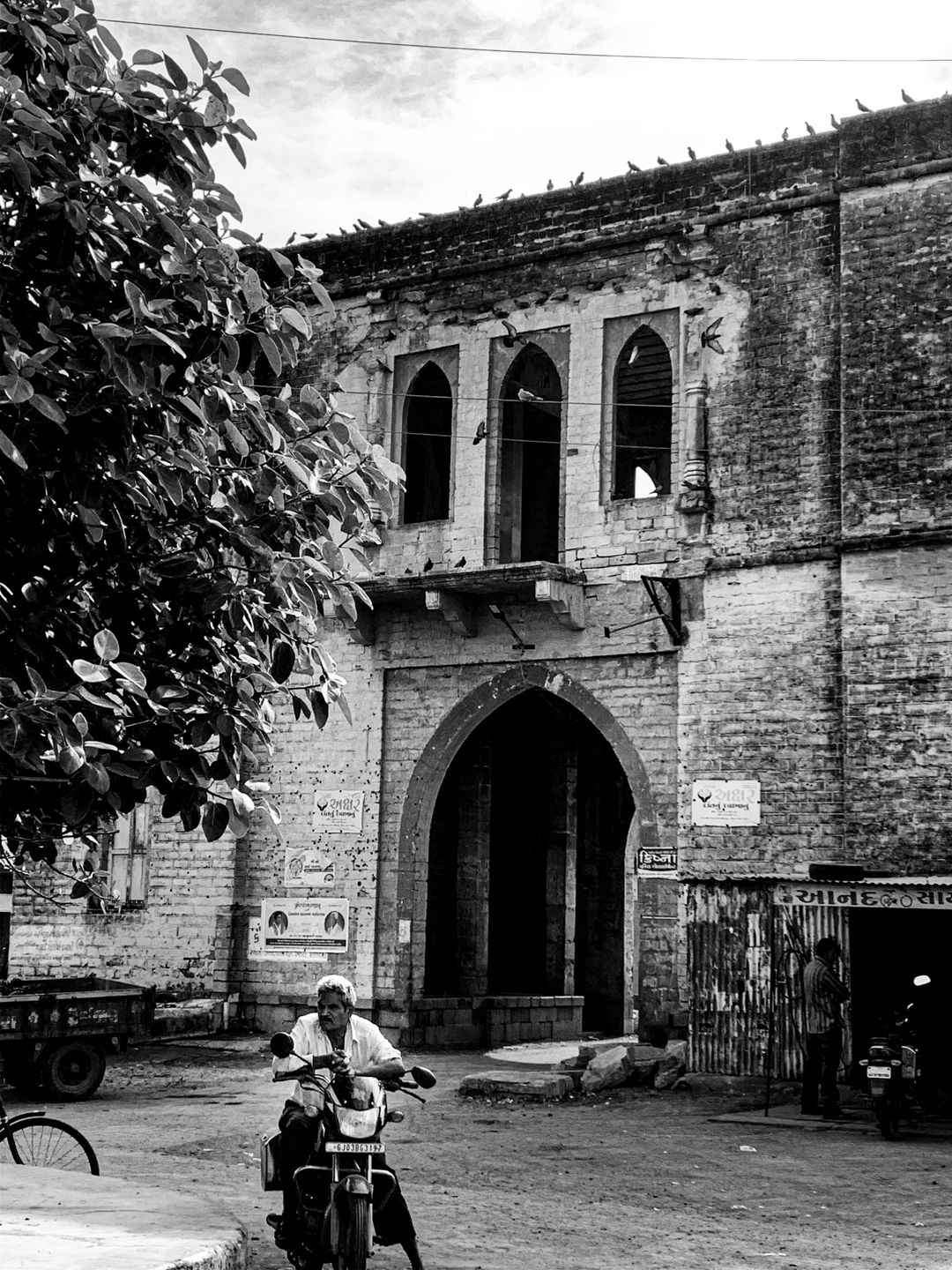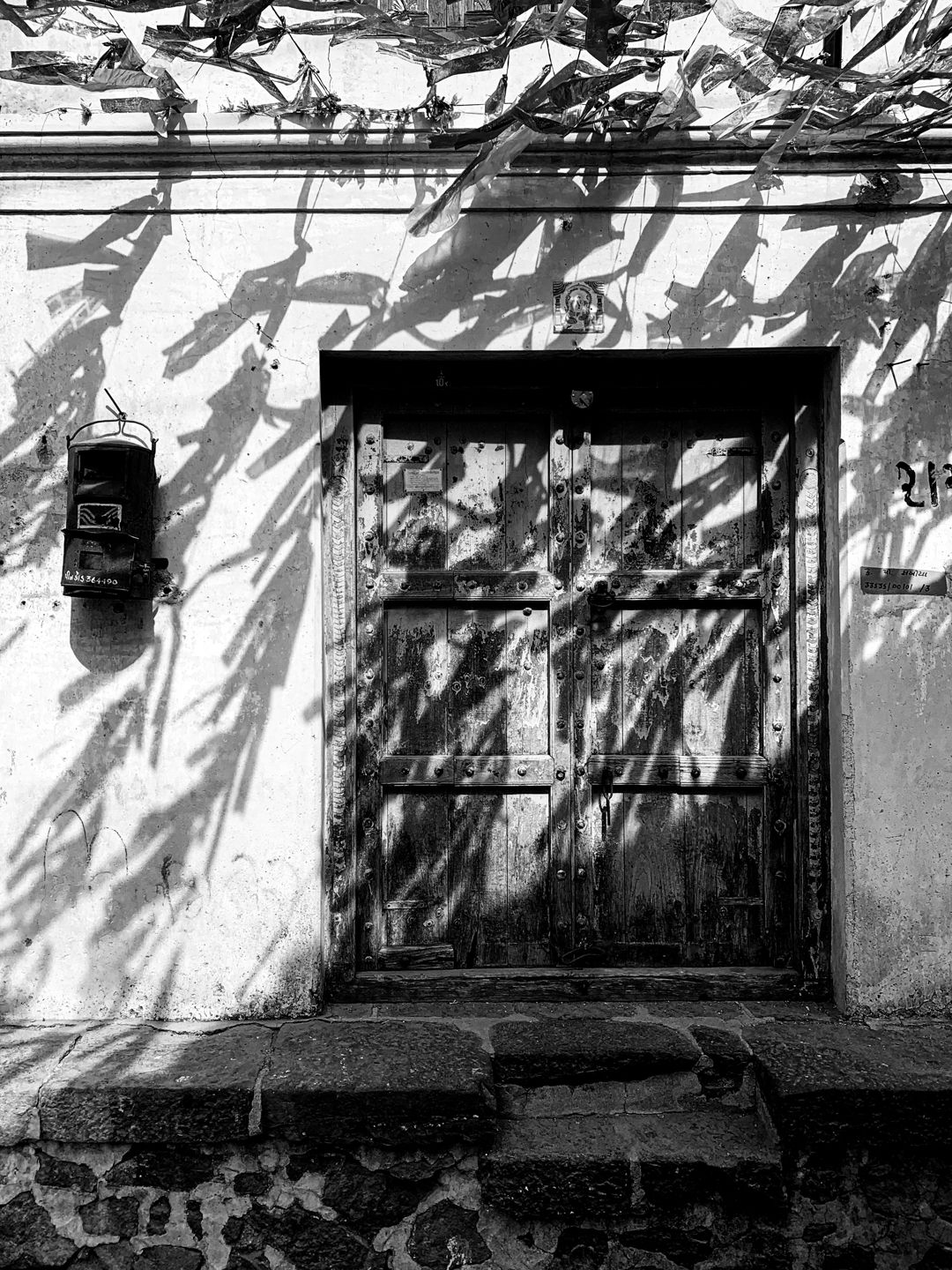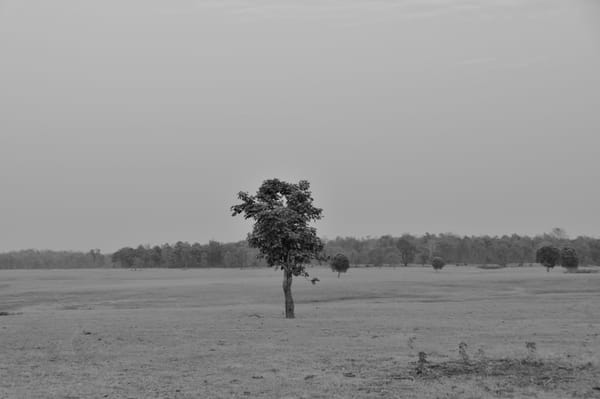At No Place
Photo essay of a journey through forgotten towns. Pictures and words by Mohit Khodidas.
It takes 2 hours and 5 stories to reach the "village-at-no-place". Some of these stories are told out loud, while some play out in your mind. The words being told mingle with the stories being made up. The largest small town near the village I just mentioned above (which you've probably never heard of) is Gondal (which you've probably heard of) and smallest large town near the said village is Vasavada (which you've probably never heard of either).


Gondal has one large road cutting through the town, which is lined with majestic old Banyan trees. I have never seen a road lined with such beautiful, grand old Banyans. As with all that is sublime, the locals probably don't find it worthy of attention any more. Small towns have big stories shared amongst the townsmen. Probably to get a feel of the grandiose. A particularly scandalous story involves a prominent temple, a riverside land, and murders. Land grabbing is of universal interest. An aside question, why is the rich temple the centre of the town life? A public space owned by quasi public holdings, emanating the virtues of public space while harbouring demons in private inner sanctums.
After a particularly abundant monsoon, the check dams are full and the Gando Baval (Prosopis juliflora) shows what it is capable of. This mesquite invasion is so commonplace that this foreign species is a part of the normative landscape. When I was young, I used to wonder why this ugly looking tree is so abundant and grows where nothing else grows? Indigenous species can't compete with this species and are duly "rooted" out. So many parallels with today's world. Anyway, I'm digressing.

You know when you've arrived at the "village-at-no-place". There is a sangam (confluence) of open gutters. That must be the village square. Gutters running crisscross mimicking the madness of the electric lines above.
It’s a strange world, the rural hinterlands of India. Not too far from the unliveable madness of the city, lies the unbearable quietude of a village. Modernity gave a passing visit to the village. It gave all its discontents to the village and left without saying a word. The conglomerate reached where the collective could not. Here in the derelict streets you can find a bottle of coke but no covered sewer lines. You can find snacks from global brands and also of sparsely trustworthy local ones, but not a street without at least five varieties of animal excrement.


But the thing that subtly but surely leaves you with a sense of defeat is the unbearable silence of a sunny afternoon. A boy sitting in an unlit shop selling snacks, waving off flies once in a while. An old lady walking on a deserted street which has nothing on the other side for her. Old men sitting under a tree, not talking, just waiting.

Many have left these villages. They’ve gone to the towns close by or cities a little further away. Having lived the city life, do they wonder that the trade was perhaps not a good one after all?




